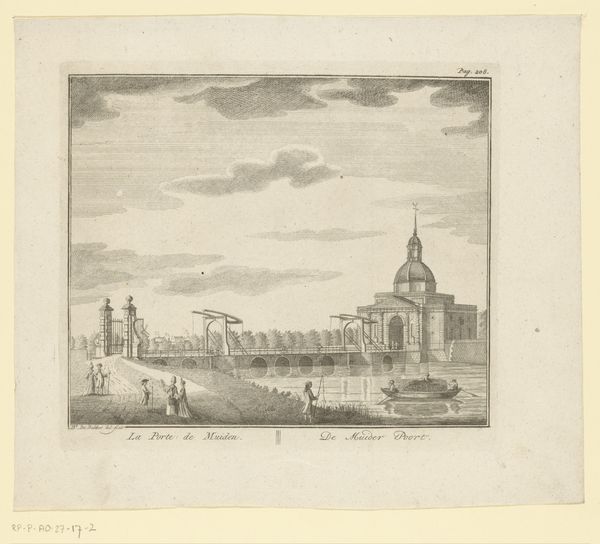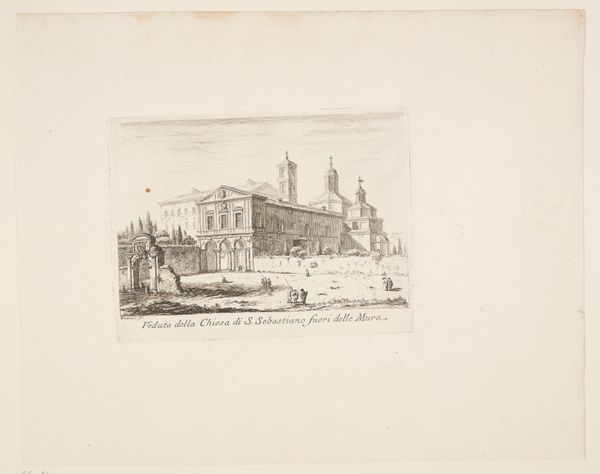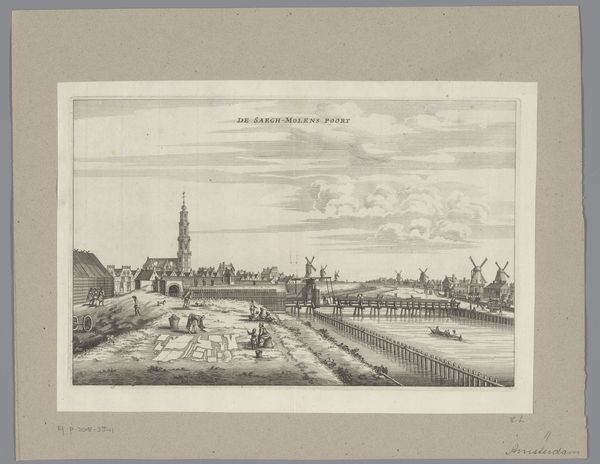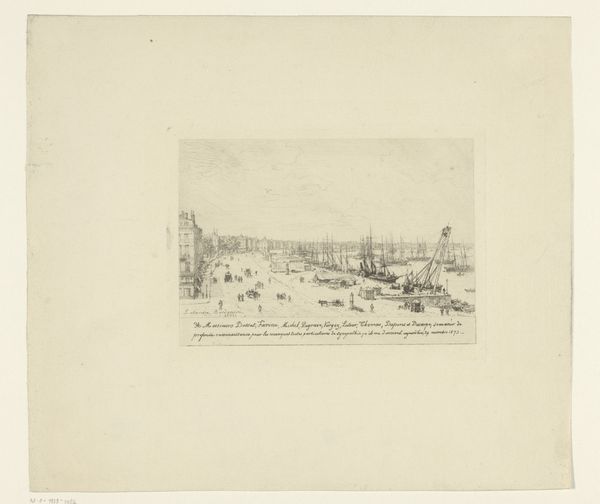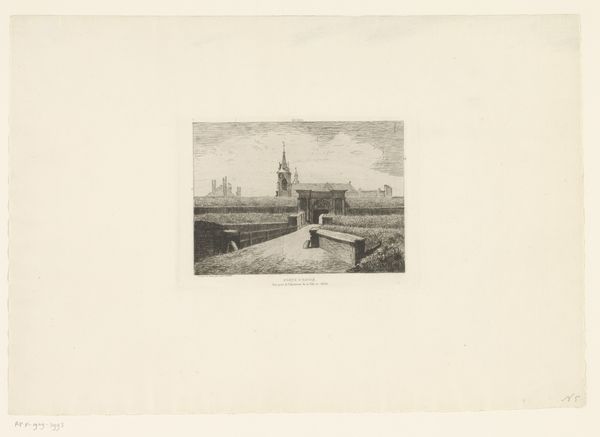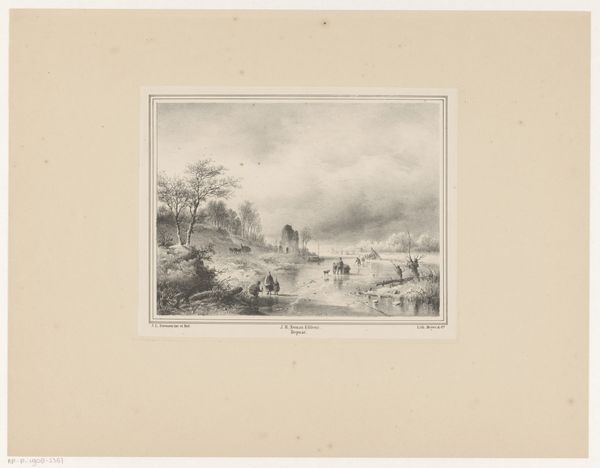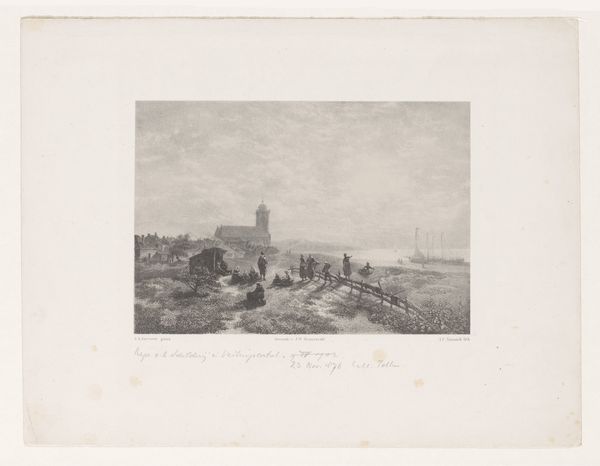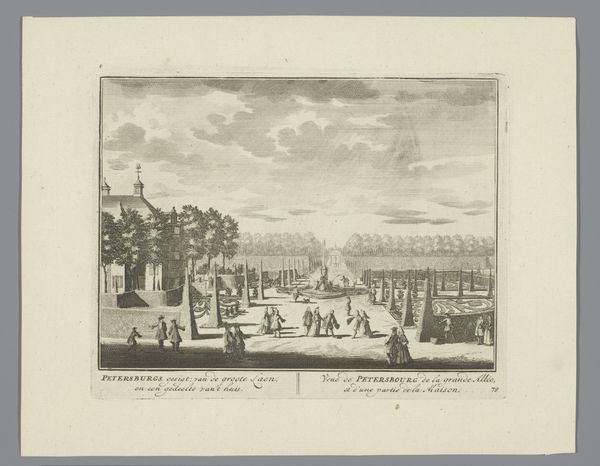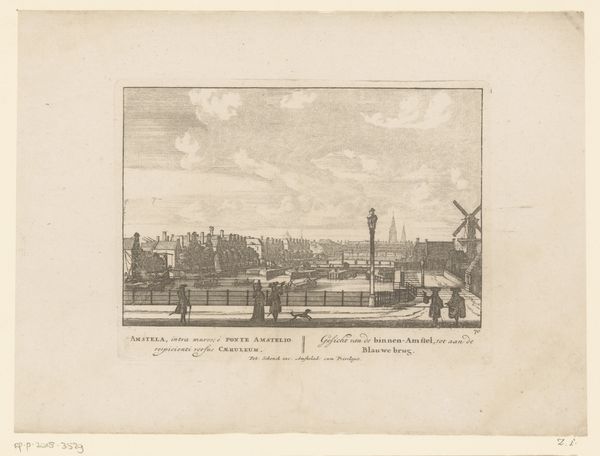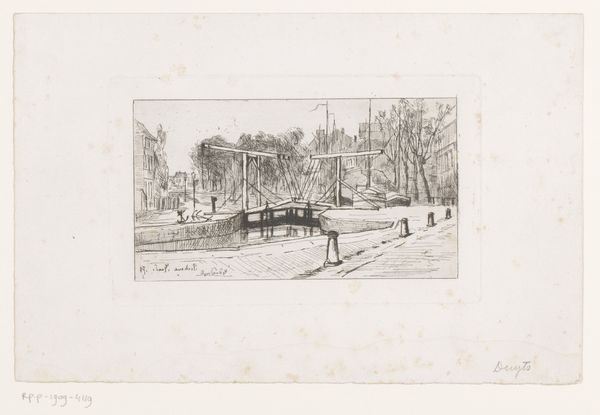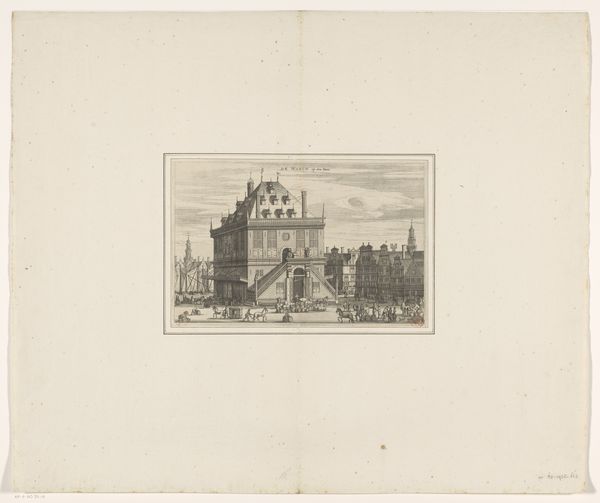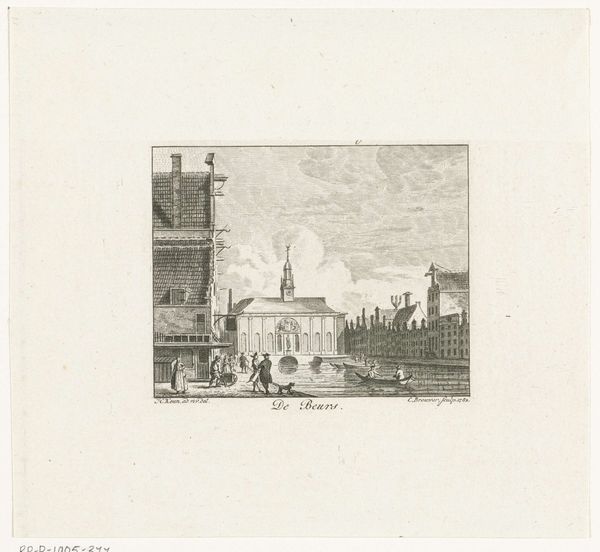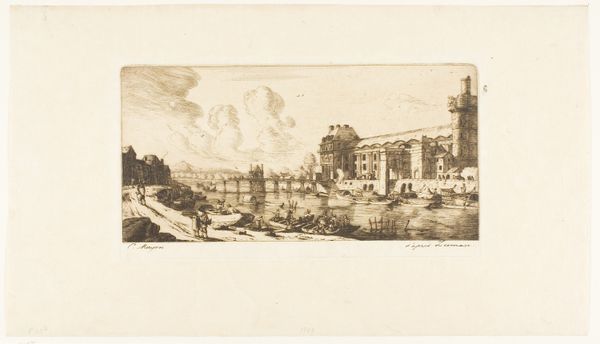
#
photo of handprinted image
#
aged paper
#
light pencil work
#
pale palette
#
pastel soft colours
#
ink paper printed
#
parchment
#
light coloured
#
old engraving style
#
soft colour palette
Dimensions: height 160 mm, width 200 mm
Copyright: Rijks Museum: Open Domain
Curator: Let's take a look at Léon Dolez's etching, "Ruiter te paard gaat richting de Porte d'Havré te Mons," created in 1875. It's currently held here at the Rijksmuseum. Editor: My initial impression is that it evokes a sense of faded grandeur, like a half-remembered dream of a fortified city. The delicate lines create an atmosphere that feels both intimate and historically distant. Curator: The etching captures a very specific historical moment, and to understand Dolez's work, we really must contextualize it within the changing political landscape of 19th century Europe, with its shifting power dynamics and emergent nationalisms, because it shows not just a gate, but also how vulnerable European cities have become with this new technology. Editor: Absolutely. I see a layering of symbols here. The horse and rider are prominent, and their presence at the gate suggests both power and vulnerability. It’s almost a trope to suggest a hero heading back or forth to defend. The gate, an opening or obstacle to a landscape. It reminds me a little bit of images representing medieval entrances to European settlements. Curator: But it’s vital to understand that in the context of its era, we cannot forget to investigate the potential power dynamics present: Dolez was also part of a generation wrestling with ideas about freedom of movement as well as immigration! Editor: True, and it makes you wonder, where is the rider going, is he passing through the gate of authority or leaving? I can see an exploration of psychological tension, perhaps mirroring the anxieties and the ambitions of a city looking toward a quickly changing future. The artist may be asking something deeper, however… something symbolic. Curator: Thinking about those social contexts adds a very sobering counterpoint. Ultimately, understanding how art speaks to political realities is where we begin to interpret its function as commentary. Editor: It seems a conversation with ourselves on both sides. An engraving that resonates beyond its technical skill into these greater implications on symbols over a broad context. Curator: Agreed, bringing these themes forward into a relevant 21st-century dialog about security and accessibility provides for such an interesting framework.
Comments
No comments
Be the first to comment and join the conversation on the ultimate creative platform.
